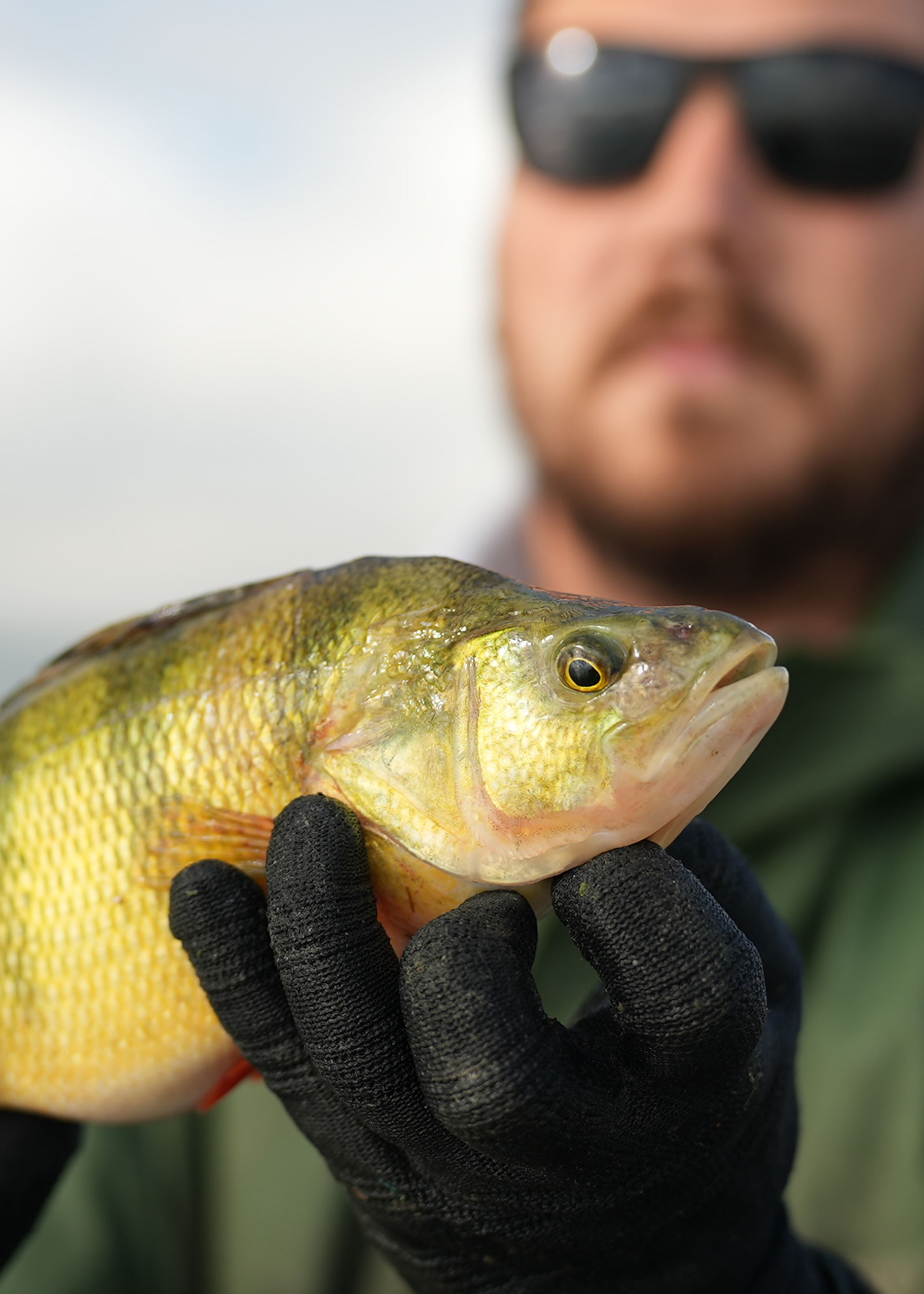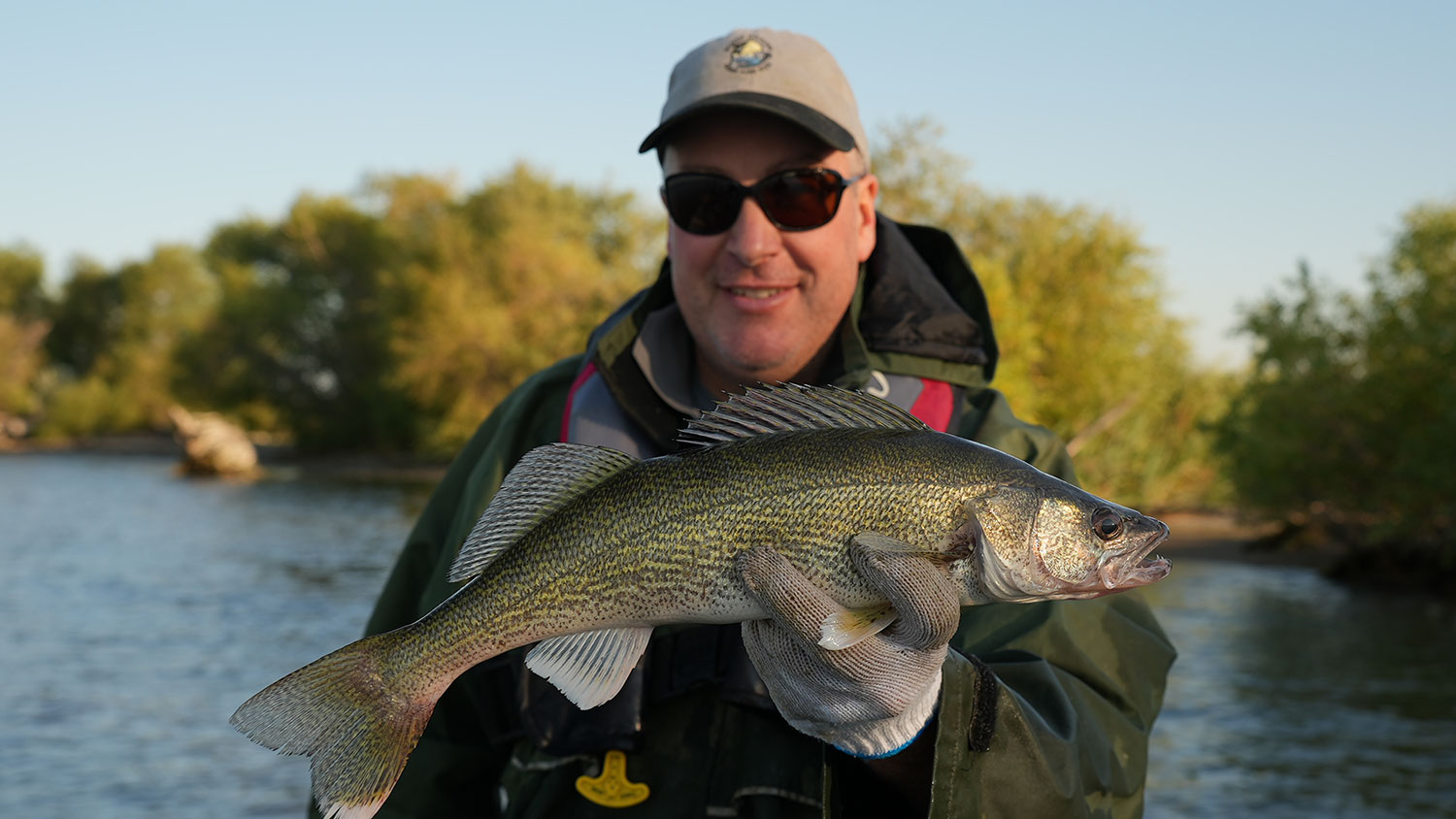Fishing for Answers in Fall
Ron Wilson

At the time of year when most anglers have swapped fishing rods for shotguns, North Dakota Game and Fish Department fisheries personnel are still fishing.
As part of the Department’s management of the many fisheries around the state, biologists sample young-of-the-year fish — from walleye to yellow perch, to bluegill, and so on — with a variety of nets in fall to assess the survival of stocked and naturally reproduced fish based on the number and sizes of fish caught.
“When we do our fall reproduction surveys, we typically use a combination of small, mesh gill nets that are designed to capture those smaller fish.
And those gill nets tend to be really effective at sampling this year’s young-of-the-year walleye and perch, in particular,” said Paul Bailey, Department south central fisheries supervisor in Bismarck.
“We also set some trap nets which can catch some walleye and perch but are typically better designed to sample our primary forage base, fathead minnows, in many of our lakes.”
Scott Gangl, Department fisheries management section leader, said the results of this fall’s survey efforts were kind of all over the board.
“Most years, we’ll see a pattern statewide where conditions were really good or conditions were really bad, but this year we’re not seeing any real consistent patterns with reproduction,” Gangl said.
“Some of our walleye lakes have been good, some have been bad.
What we’re seeing is probably a lot of the simpler fish communities in our newer lakes that just have, say, walleye and maybe some perch in them, they seem to have done pretty well this year in terms of stocking success.
Or, in a few cases, we’ve seen some natural reproduction, but we’re not seeing that consistently across the state.”
The same holds true for every other species, too.

Bailey measures fish netted during fall reproduction survey efforts to assess the survival of stocked and naturally reproduced fish.
Fisheries biologists are seeing some panfish reproduction, but not great.
They’re seeing some yellow perch production in some places, but not everywhere.
Even so, the good news is 2023 was a really good year across the state.
That was one of those years fisheries biologists did see a pattern and it was really consistent with really good reproduction and stocking success across the state.

